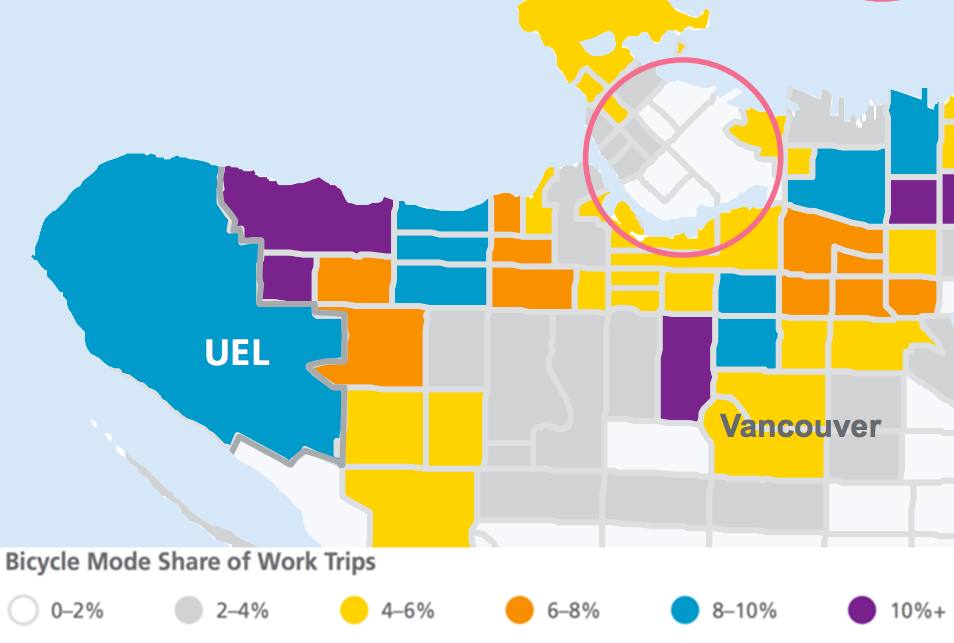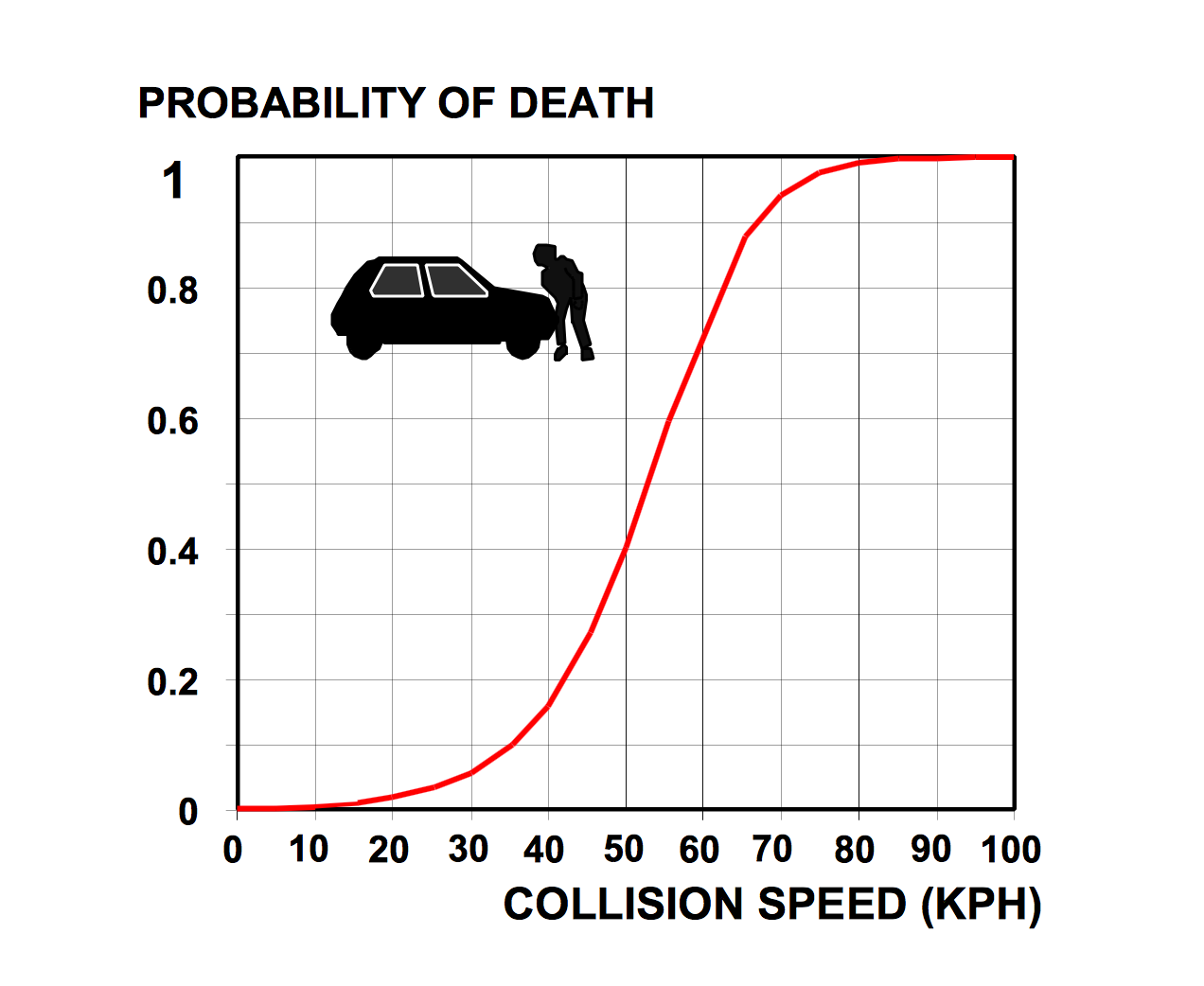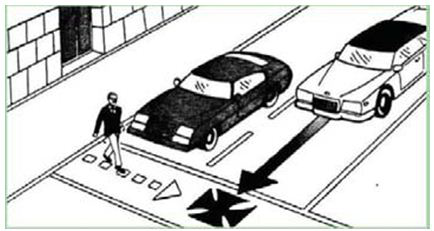Background
Designing roads that work for all road users is a difficult task. At times it requires background information and technical language to describe some of the concepts involved. Here are some more details and background.Cycling and Walking on Access Routes

The neighbourhoods connected by the access roads have one of the highest cycling rates in Vancouver. Despite this, the cycling and walking mode share to campus has remained anemic, with only 2,400 cycling and 1,000 walking trips to and from UBC in 2013, accounting for 1.7% cycling mode share and 0.7% pedestrian mode share.
Traffic
Traffic along the access routes has been generally decreasing, overall by about 900 vehicles per year. The graph depicts average daily vehicle travel to and from UBC across the UBC screenline.
Source: UBC Planning
This dramatic decreasing trend in traffic is especially pronounced in peak periods and comes despite the strong growth in students and residents living on campus.85 percentile Speed

Travel speeds are generally much higher than the speed limit, providing a serious challenge to safe walking and cycling. Numerous studies have shown how impact speeds effect mortality rates in vehicle-pedestrian collisions, all with similar results.
For speed measurements, often only the '85 percentile' speed is released. This is the speed where 85% of traffic goes slower and 15% of traffic goes faster.
In traditional car-centred planning the 85 percentile speed was used to set the speed limit. In more modern planning, speed limits are set with safety considerations of all users in mind and the the roads are designed to fit the desired speeds. The 85 percentile speed is then one of the measures used to determine if the design goals are met.
Multiple Threat Scenario

Some of the access roads have multiple travel lanes in the same direction. In that case pedestrians crossing the road are exposed to the 'double threat' scenario.
If a pedestrian wants to cross and the first car stops or slows down to wait for the pedestrian, it obscures the view of the second driver on the pedestrian. If the second driver fails to properly interpret the reason why the first car was slowing down it will continue driving across the pedestrian crossing at high speed. Accidents involving the 'double threat' scenario are often more severe than other types of pedestrian accidents.
In some places that place a high value on pedestrian safety, for example in Germany, pedestrian crossings that expose pedestrians to the double-threat scenario cannot be built -- in these situations a red-light crossing is required.